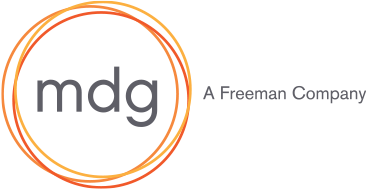
In a time when the term “inclusion” can spark debate, event professionals might feel pressure to retreat from bold, community-minded messaging. But inclusive event marketing isn’t about politics. It’s about people. It’s about saying, “everyone’s welcome” and then actually showing how you mean it.
Many event marketers engage in performative gestures around specific months — a splash of social content in February for Black History Month, a rainbow logo in June, a message of solidarity after a national tragedy. These moments might be well-intended, but when they’re not backed by sustained, year-round actions (that then manifest themselves at our events) audiences see through the inconsistency. One-off gestures don’t build trust; they highlight the gap between your words and your actions.
If your commitment to inclusion is limited to a few mainstage speakers or a token social post, it’s not enough. Today’s attendees — particularly younger professionals — are looking for organizational and event brands that walk the talk 365 days a year.
That consistency starts with the basics: understanding who your audience truly is. Go beyond the obvious demographics and dig into behavioral data, qualitative feedback and cultural nuances. Create personas that reflect different lived experiences. And then make sure those voices are represented not just at the event — but in the emails you send, the speakers you choose, the partners you work with and the way your brand shows up online.
Representation isn’t something you check off a list. It’s a throughline that shapes every touchpoint. That might mean publishing attendee spotlights that reflect a range of identities and perspectives. It could look like hosting focus groups with historically underrepresented participants to identify real barriers to attendance — and then doing something about them. It means ensuring that inclusive language and visuals aren’t just dropped in at the last minute, but thoughtfully integrated into your strategy from day one.
Importantly, it also starts from within. The teams that design and market events should reflect the diversity we hope to see in our audiences. That includes the agencies and vendors we bring to the table. Because authenticity isn’t manufactured — it’s modeled.
Events are powerful spaces for connection, learning and community-building. But only if people feel like they belong there. Not just during Pride Month or Women’s History Month. Every month.
The most resonant brands — and the most successful events — are those that embrace inclusion as a core value, not a campaign. Because when people feel seen, valued and welcomed, they don’t just show up. They come back.
A version of this article originally appeared in PCMA Convene.


